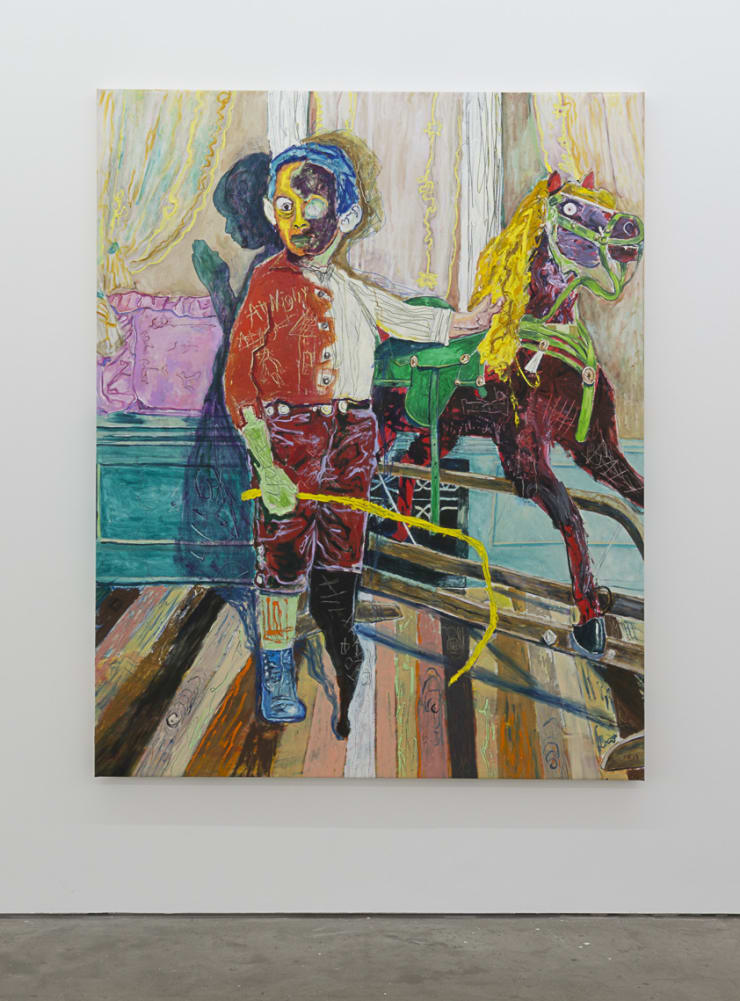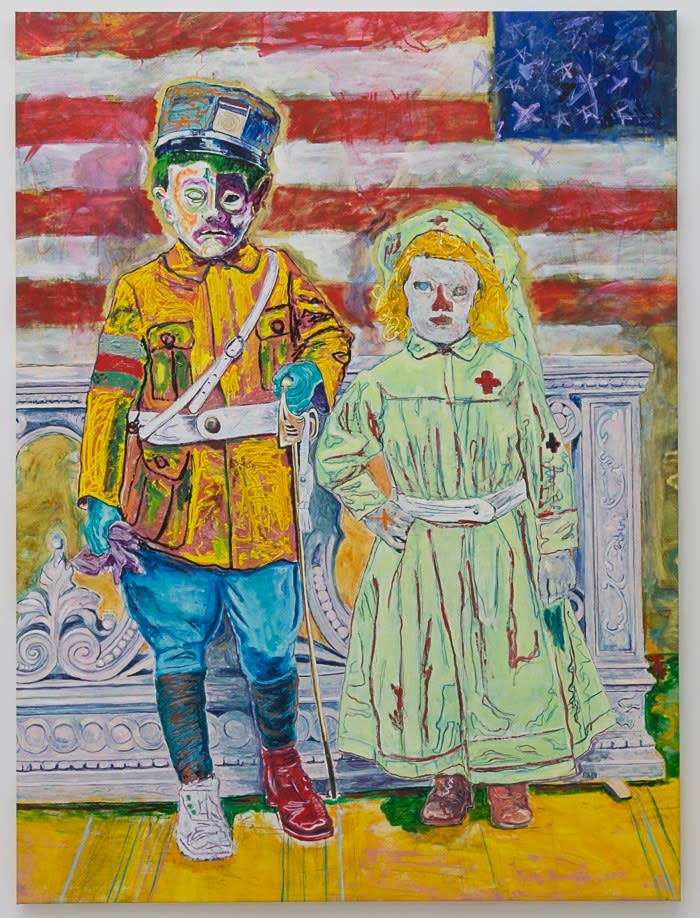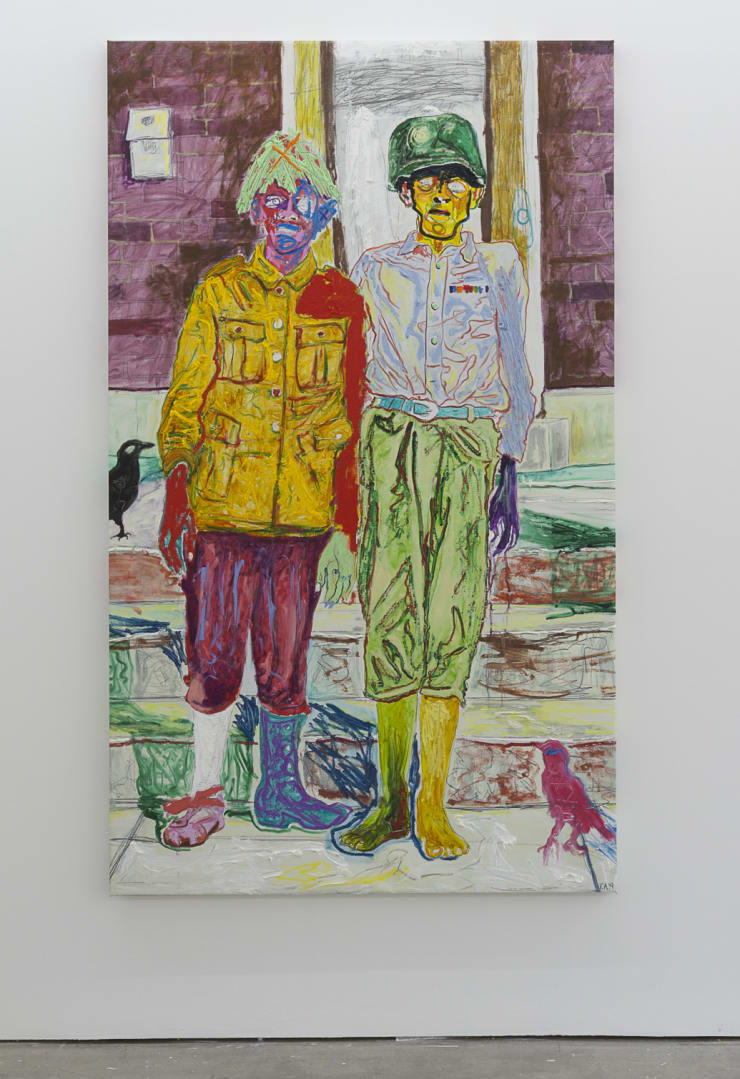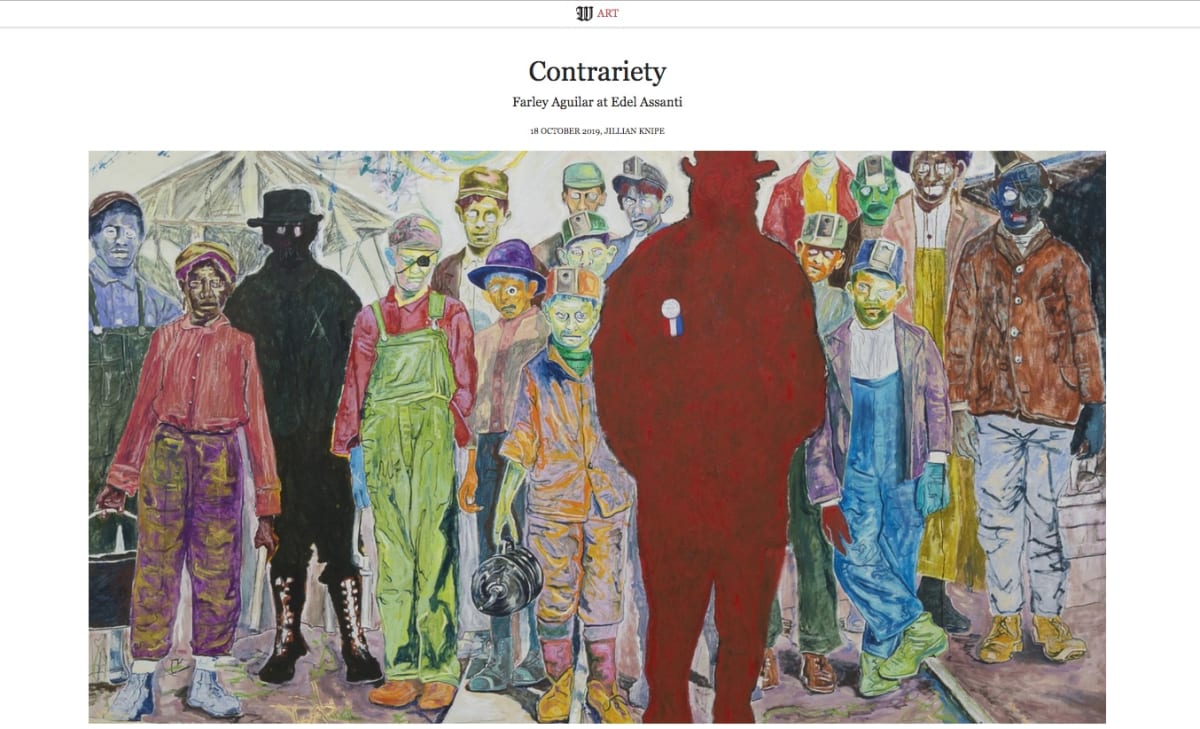Farley Aguilar: Contrariety
Private View | Thursday 12 September 6-8pm
Edel Assanti is pleased to present Farley Aguilar’s first solo exhibition in the UK. Aguilar uses a distinct pictorial language to depict tableaux of evocative, unsettling scenes. His subject matter is the social facade of community and habitual modes of human behaviour within them, addressing group identity, political allegiance and cultural ritual. Working from found photographic imagery ranging from crowd scenes and portraits to historical reportage, the artist’s charged paintings invoke a reappraisal of moral doctrine, human nature and the echoing of history.
In a targeted juxtaposition, the paintings in Aguilar’s new series depict portraits of children from wealthy backgrounds posing with toy horses, alongside images of children in labour – breaker boys and female operatives in the late nineteenth and early twentieth centuries. Breaker boys were young coal mining workers who were employed to separate rocks and other debris from coal by hand. Operatives were employed in the garment and electrical industries, paid to perform repetitive tasks in proportion to the volume of work completed, rather than on an hourly rate.
The impact of this sinister pairing of subjects is amplified by the intellectual foundations of Aguilar’s latest body of work, which draws inspiration from Thomas Piketty’s seminal 2013 book, Capital in the Twenty-First Century. Piketty’s thesis is that inequality is not an accident, but rather a feature of capitalism, which unless reformed, will threaten the liberal democratic order. He argues that the trend towards higher inequality was reversed between 1930-1975 due to the unique circumstances of two world wars and the Great Depression, but is today veering back towards “patrimonial capitalism”, in which much of the economy is dominated by inherited wealth.
Aguilar’s haunting scenes mobilise childhood as a vehicle to gauge the status of western societies’ egalitarian aspirations and trajectory. The toy horses depicted evoke the art historical tradition of equestrian portraiture, underlining culture’s inseparable relationship to wealth and status. The contemporaneous breaker boys and operatives provide extreme examples of progress’ blindness to humanity – denied the luxuries of play, education and choice, children served as expendable cogs in the engine room of the industrial revolution.
Despite their grounding in a precise past, through studied technical processes and aesthetic devices, Aguilar’s paintings converse in a neutral tense, bridging past, present and future socio-political realities. Aguilar uses all manner of brushwork, oil sticks and pencil to conjure these scenes in delirious, lurid colour. Expressive application meets the tight, serrated outlines that spring the figures in Aguilar’s paintings from their textured backgrounds. At times paint is applied directly from tube, with markings violently scratched into its surface. Faces are obscured by ghoulish masks – crossed out eyes, distorted heads and sewn up mouths – with the effect of demarcating the subjects as a unified social signifier, summoning the darkest aspects of our raw nature.
The dichotomy of the two sets of images in this series triggers an intuitive moral response to a distant era. Yet it equally highlights historically repetitive paradigms of injustice and skewed privilege, and society’s lack of collective will or ability to systemically recalibrate. In a western political landscape of competing narratives and untruths, Aguilar’s figures beckon us from across the void in frustration, hope and terror.
Aguilar is a self-taught painter born in Nicaragua and now living in Miami, Florida. Recent exhibitions include Cleansing, Lyles & King, New York, US (2019); We are the people. Who are you?, Edel Assanti, London, UK (2019); Shifting Gaze: A Reconstruction of the Black & Hispanic Body in Contemporary Art, The Mennello Museum, Orlando, US (2018) and Temporary Autonomous Zones, Museum of Contemporary Art, Miami, US (2015). His work is included in the collections of the Akron Art Museum, Ohio, Pérez Art Museum, Florida, Brown University, Providence and the Orlando Museum of Art, Florida.









